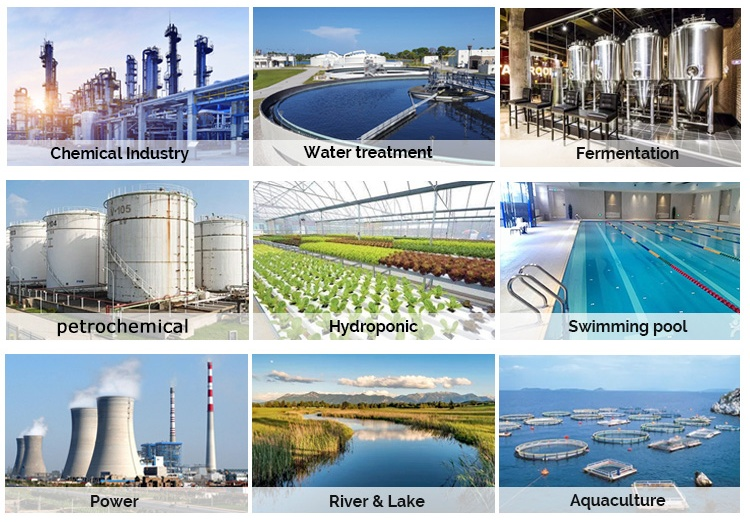Dissolved Oxygen Sensor Meter 316L Stainless DO Probe
Features
① Antibacterial Membrane Technology:
Features a chemically - treated fluorescent membrane with antimicrobial properties, suppressing biofilm growth and microbial interference in aquaculture waters for long - term measurement stability.
② Harsh Aquaculture Optimization:
Tailored for harsh aquaculture environments (e.g., high salinity, organic pollution), resisting fouling and ensuring consistent DO detection accuracy.
③ Rapid & Precise Response:
Delivers <120s response time and ±0.3mg/L accuracy, with temperature compensation (±0.3°C) for reliable data across dynamic aquatic conditions.
④ Protocol - Friendly Integration:
Supports RS - 485 and MODBUS protocols, compatible with 9 - 24VDC power, enabling seamless connection to aquaculture monitoring systems.
⑤Corrosion - Resistant Construction:
Built with 316L stainless steel and IP68 waterproofing, withstanding immersion, saltwater, and mechanical wear in harsh aquatic settings.


Product Paramenters
| Product Name | Dissolved Oxygen Sensors |
| Model | LMS-DOS100C |
| Respond Time | > 120s |
| Range | 0~60℃、0~20mg⁄L |
| Accuracy | ±0.3mg/L |
| Temperature Accuracy | <0.3℃ |
| Working Temperature | 0~40℃ |
| Storage Temperature | -5~70℃ |
| Power | 9-24VDC(Recommend12 VDC) |
| Material | Polymer Plastic/ 316L/ Ti |
| Size | φ32mm*170mm |
| Sensor Interface Supports | RS-485, MODBUS protocol |
| Applications | Special for aquaculture online, suitable for harsh water bodies; Fluorescent film has the advantages of bacteriostasis, scratch resistance,and good anti-interference ability. The temperature is built in. |
Application
① Intensive Aquaculture:
Critical for high - density fish/shrimp farms, RAS (Recirculating Aquaculture Systems), and mariculture, monitoring DO in real - time to prevent fish kills, optimize growth, and reduce mortality.
② Polluted Water Monitoring:
Ideal for eutrophic ponds, wastewater - drained water bodies, and coastal aquaculture zones, where anti - biofouling capability ensures accurate DO data despite microbial loads.
③ Aquatic Health Management:
Supports aquaculture professionals in diagnosing water quality issues, adjusting aeration systems, and maintaining optimal DO levels for aquatic species’ health.










